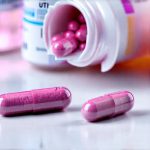Urinary tract infections (UTIs) are incredibly common, affecting millions annually. They range in severity from mild discomfort to debilitating pain, often disrupting daily life. While antibiotics are typically the cornerstone of UTI treatment prescribed by a healthcare professional, supportive care plays a vital role in recovery and preventing recurrence. Among these supportive measures, adequate hydration stands out as arguably one of the most impactful – yet precisely how much water is best during UTI recovery remains a frequently asked question, often shrouded in generalized advice. It’s not simply about drinking “more” water; understanding the nuances related to individual needs, infection stage, and other factors is key to optimizing this essential aspect of healing.
The body’s natural mechanisms for fighting off infection are significantly enhanced by proper hydration. Water helps flush bacteria out of the urinary tract, diluting urine which minimizes irritation and discomfort. However, the ideal water intake isn’t a one-size-fits-all solution. Factors like activity level, climate, pre-existing health conditions (like kidney problems), and even dietary habits all influence individual fluid requirements. Furthermore, focusing solely on water overlooks other hydrating sources – herbal teas, clear broths, and water-rich fruits and vegetables can all contribute to overall hydration and support recovery. This article will explore the science behind hydration during UTI recovery, providing practical guidance to help you navigate this important aspect of healing effectively.
The Role of Hydration in UTI Recovery
Water is fundamental to nearly every bodily function, and its importance is magnified when battling a UTI. A UTI develops when bacteria, most commonly E. coli, enter the urinary tract. These bacteria can adhere to the bladder walls and multiply, causing inflammation and infection. Increasing fluid intake serves as a natural flushing mechanism – essentially washing away these harmful microorganisms before they can establish a full-blown infection or further irritate the urinary lining. The dilution effect also reduces the concentration of irritating substances in urine, lessening pain and discomfort during urination.
Beyond simply flushing bacteria, adequate hydration supports overall immune function. A well-hydrated body is better equipped to fight off infection, as white blood cells can more efficiently travel throughout the system to combat pathogens. Dehydration, conversely, weakens the immune response, potentially prolonging recovery time. It’s important to remember that UTI symptoms themselves – like fever and increased urination – can also contribute to fluid loss, making consistent hydration even more critical during illness.
The color of your urine is a readily available indicator of your hydration status. Pale yellow or clear urine generally signifies adequate hydration, while dark yellow or amber urine suggests you need to increase your intake. However, relying solely on urine color isn’t always accurate, particularly if you are taking certain medications or vitamins that can affect its hue. Therefore, it’s best to combine visual cues with mindful fluid consumption throughout the day. Considering natural supplements alongside hydration may also be beneficial in prevention.
Determining Your Ideal Water Intake
Establishing a precise water intake recommendation during UTI recovery is challenging due to individual variations and changing needs. General guidelines often suggest 8 glasses (approximately 2 liters) per day, but this isn’t necessarily sufficient for everyone. A more personalized approach takes into account several factors:
- Body weight: Individuals with higher body weights generally require more fluid than those with lower weights.
- Activity level: Those engaging in physical activity or living in hot climates need to replenish fluids lost through sweat.
- UTI severity & Stage: Early stages of acute infection might necessitate increased intake, while recovery phases can be adjusted based on symptom improvement.
- Underlying health conditions: Individuals with kidney disease or heart failure may have fluid restrictions and should consult their physician before increasing water intake.
A good starting point is to aim for at least 2-3 liters (approximately 8-12 cups) of fluids daily during UTI recovery, but adjust based on the factors listed above. A helpful calculation is to drink approximately 0.5 to 1 ounce of fluid per pound of body weight each day. Listen to your body – if you feel thirsty, drink! Don’t wait until you’re parched.
It’s also crucial to consider what you are drinking. While water should be the primary source of hydration, herbal teas (like dandelion or parsley tea which have mild diuretic properties – always check with a healthcare professional before consuming) and clear broths can contribute to your daily fluid intake. Avoid sugary drinks, caffeine, and alcohol, as these can irritate the bladder and potentially worsen symptoms. These beverages also don’t hydrate as effectively as water. Understanding the best diet during recovery is equally important.
Beyond Water: Hydrating Foods & Beverages
Focusing solely on drinking plain water can sometimes feel like a daunting task. Fortunately, many foods offer significant hydration benefits and can supplement your fluid intake. Fruits and vegetables with high water content are excellent choices:
- Watermelon: Approximately 92% water
- Cucumbers: Around 96% water
- Strawberries: Roughly 91% water
- Celery: Contains about 95% water
- Lettuce: Varied, but generally high in water content
Incorporating these into your diet can contribute significantly to overall hydration without requiring you to drink excessive amounts of water. Similarly, certain beverages beyond plain water can be beneficial:
- Coconut Water: A natural electrolyte source that aids rehydration.
- Herbal Teas: As mentioned earlier, some herbal teas offer diuretic benefits (with appropriate medical guidance). Avoid caffeinated teas.
- Clear Broths: Provide hydration and electrolytes while being gentle on the stomach.
However, it’s vital to avoid beverages that can irritate the bladder or worsen UTI symptoms. These include:
- Caffeine: Acts as a diuretic and can increase bladder irritation.
- Alcohol: Dehydrating and irritating to the urinary tract.
- Sugary drinks: Can weaken immune function and potentially promote bacterial growth.
- Citrus juices: While vitamin C is beneficial, highly acidic citrus juices can sometimes irritate the bladder in some individuals.
Monitoring Your Progress & Seeking Professional Guidance
Hydration is a supportive measure, not a cure for UTIs. It’s essential to follow your healthcare provider’s prescribed treatment plan, which typically involves antibiotics. As you recover, pay attention to how your body responds to increased fluid intake. If symptoms worsen despite adequate hydration or if new symptoms develop (such as fever, back pain, or nausea), seek medical attention immediately.
- Maintain a journal tracking your fluid intake and urinary symptoms. This can help identify patterns and adjust your hydration strategy accordingly.
- Monitor urine color regularly to assess your hydration status.
- Be mindful of any underlying health conditions that may affect fluid balance.
It’s crucial to remember: this information is not intended as medical advice. Always consult with a healthcare professional for personalized guidance regarding UTI treatment and recovery, including appropriate water intake based on your individual circumstances. They can assess your condition, provide accurate diagnosis, and tailor a plan to meet your specific needs. Ignoring symptoms or self-treating can lead to complications and prolonged illness. Furthermore, understanding the role of hydration is key to effective recovery. If you also experience urinary incontinence, consider learning about medication options.





















